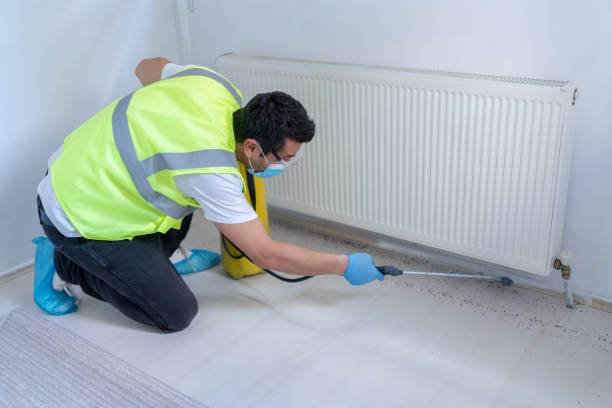Maintaining a pest-free environment in large-scale industrial facilities is crucial for the health of employees, the integrity of products, and the operation’s overall success. Pests can lead to costly damages, safety concerns, and even regulatory violations in industrial environments. Understanding the challenges and implementing effective pest control strategies is essential to running these facilities smoothly.
Understanding the Unique Challenges of Industrial Pest Control
Industrial pest control differs from pest control in small offices or residential spaces. Large-scale facilities, such as warehouses, manufacturing plants, or distribution centres, face unique challenges due to their size, structure, and type of materials stored or processed. Open spaces, constant movement of goods, and numerous entry points create a perfect environment for pests to thrive.
Many of these facilities are home to various pests, including rodents, insects, and birds. Each type of pest brings its own set of problems, from contaminating products to damaging machinery. To ensure the facility remains pest-free, industrial pest control must address these challenges with preventive and reactive strategies.
Common Pests Found in Industrial Facilities
Rodents
Mice and rats are standard in industrial spaces due to the abundance of hiding spots, food sources, and shelter. Rodents can chew through wiring, damage machinery, and contaminate stored products with droppings and urine.
Insects
Cockroaches, ants, and flies are frequently seen in industrial facilities. These pests are attracted to food sources, moisture, and waste products, making food production and storage areas particularly vulnerable.
Birds
Birds such as pigeons and seagulls often find industrial facilities attractive nesting spots, especially in areas with high ceilings or open spaces. Their droppings can create serious sanitation issues, damage equipment, and pose health risks.
Why Large-Scale Facilities Are Vulnerable to Pests
Industrial spaces have numerous access points, including doors, windows, loading docks, and ventilation systems. These entryways make it easy for pests to enter unnoticed. The facility’s sheer size also means that it can be challenging to monitor every area closely, giving pests plenty of opportunities to settle in and multiply.
Industrial facilities often constantly influx shipments, pallets, and raw materials. Pests can easily hitch a ride on these items and find their way into the facility. Once inside, pests can hide in cracks, crevices, and behind machinery, making detecting and eradicating them challenging.
Implementing Effective Industrial Pest Control Strategies
Given the complexities of large-scale facilities, industrial pest control solutions must be thorough. These strategies should focus on prevention, early detection, and targeted eradication to minimise the risk of infestation.
Integrated Pest Management (IPM)
One of the most effective approaches to industrial pest control is Integrated Pest Management (IPM). IPM is a holistic strategy that combines multiple methods to prevent and control pest populations. Rather than relying solely on chemical treatments, IPM emphasises prevention and long-term control by addressing the root causes of infestations.
IPM includes the following key components:
Monitoring and Identification
Regular inspections are essential to identify potential pest issues early. Trained professionals can assess the facility for signs of infestation, such as droppings, nests, or damaged products. Early detection allows for timely intervention before the problem escalates.
Exclusion and Sanitation
Preventing pests from entering the facility is crucial. Sealing cracks, repairing damaged screens, and ensuring proper door seals are some ways to keep pests out. Sanitation also plays a significant role in pest control. Keeping areas clean and free of debris, spilled food, and standing water will discourage pests from residences.
Biological and Mechanical Controls
In some cases, biological controls, such as introducing natural predators, can be used to keep pest populations in check. Mechanical traps and barriers are also practical tools for controlling pests in specific areas without chemicals.
Targeted Chemical Treatments
Chemical treatments can be used when necessary but should be applied strategically. Rather than spraying indiscriminately, targeted applications of pesticides can treat specific problem areas, minimising the risk to employees and products.
Tailoring Solutions to Specific Industries
Industrial pest control strategies must be tailored to each facility’s specific needs. For example, food processing plants require extra precautions to ensure pest control measures do not contaminate food products. In contrast, warehouses storing non-food items may focus more on exclusion techniques and mechanical controls.
Working with pest control professionals who understand the nuances of industrial settings is essential. These experts can help design a customised pest management plan that fits the facility’s unique needs and complies with industry regulations.
Ongoing Maintenance and Monitoring
Pest control is a short-term solution, especially in large-scale facilities. Ongoing maintenance and monitoring are crucial to ensure the facility remains pest-free. Regular inspections, adjustments to the pest control plan, and proactive measures can help prevent future infestations.
Monitoring tools, such as bait stations, traps, and electronic monitoring systems, can be placed strategically around the facility to detect pest activity early. These tools can also provide valuable data on pest behaviour, allowing pest control professionals to refine their strategies over time.
The Importance of Employee Training and Involvement
One often overlooked aspect of industrial pest control is the role of employees in preventing infestations. Employees working on the floor daily are the first line of defence in spotting potential pest issues. Training employees to recognise signs of pest activity, report problems, and follow sanitation protocols is critical.
Educating staff on proper storage practices, waste disposal, and routine cleaning can go a long way in preventing pests from gaining a foothold in the facility. Open communication between employees and pest control professionals ensures that potential issues are addressed quickly and effectively.
Conclusion
Maintaining a pest-free environment in large-scale industrial facilities is challenging but essential. Industrial pest control requires a multifaceted approach that includes prevention, monitoring, and targeted treatment. Facilities can effectively control pest populations and prevent costly infestations by implementing an Integrated Pest Management system, tailoring strategies to specific industries, and involving employees. A proactive approach to pest control protects the facility’s operations and safeguards the health and safety of employees and the integrity of products.


